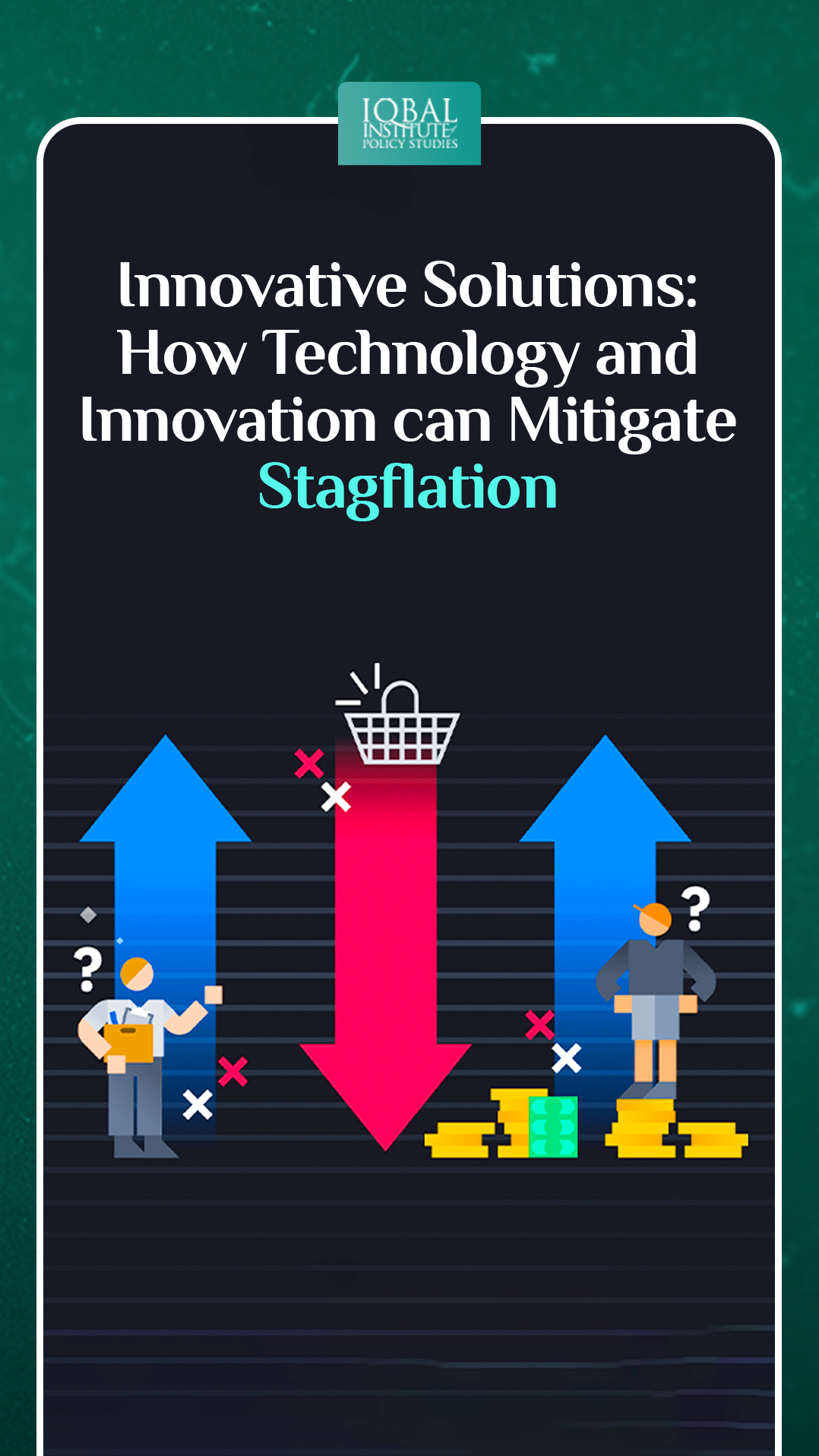Stagflation, the unusual economic conundrum characterized by stagnant economic growth, high inflation, and high unemployment, presents a formidable challenge for policymakers worldwide. Historically, conventional economic strategies have often fallen short in addressing this complex phenomenon. However, in the era of rapid technological advancement and innovation, there lies a potent arsenal of tools that can be harnessed to mitigate the effects of stagflation. This blog post explores the dynamic role of technology and innovation in confronting stagflation, shedding light on how innovative solutions can provide a way forward in these challenging economic times.
The Role of Technology and Innovation
Productivity Enhancement:
In a stagflationary environment, one of the most pressing challenges is stagnant growth. Technology and innovation can bolster productivity across industries. Advanced manufacturing techniques, automation, and artificial intelligence can streamline processes, reduce costs, and increase output without requiring a proportionate increase in labor.
Inflation Mitigation
High inflation can erode purchasing power and create economic uncertainty. Innovative fintech solutions can offer tools for consumers to manage inflation better. For instance, digital budgeting apps and investment platforms can help individuals navigate rising prices more effectively.
Job Creation
Elevated unemployment is another facet of stagflation. Technology-driven industries, such as renewable energy, biotechnology, and information technology, hold the potential to create high-skill, high-wage jobs. Investment in training and education is essential to prepare the workforce for these emerging sectors.
Resource Efficiency
Technological innovations can lead to resource efficiency, reducing the cost of production. Green technologies, for instance, can mitigate stagflation’s environmental impact while simultaneously cutting production costs.
Innovative Solutions in Practice
Digital Transformation
Governments and businesses alike have a compelling opportunity to embark on digital transformation journeys. E-governance initiatives can streamline bureaucratic processes, reduce inefficiencies, and combat corruption, all of which are essential in a stagflationary context where economic resources are precious. For instance, digitalizing public services, such as tax collection and administrative procedures, can minimize paperwork and human intervention, enhancing transparency and efficiency.
In the private sector, companies can leverage digitalization to create new business models and markets. E-commerce platforms and digital marketplaces can help businesses expand their reach, reducing the impact of economic stagnation. Moreover, companies can employ data analytics to gain insights into consumer behavior and preferences, allowing for more effective marketing and product development strategies.
Sustainable Practices
Sustainability and environmental consciousness have gained prominence in recent years. Innovations in sustainable technologies can have a dual benefit: they mitigate the environmental impact of economic activities while also cutting production costs. For instance, the adoption of renewable energy sources, such as solar and wind power, can reduce energy expenses for both individuals and businesses. Smart grids can optimize energy distribution, further enhancing efficiency.
In agriculture, precision farming techniques powered by technology can minimize resource wastage and maximize crop yields. Similarly, sustainable forestry practices and aquaculture technologies can alleviate the strain on natural resources and promote responsible resource management.
Education and Upskilling
To ensure the workforce is prepared for emerging industries, investments in education and upskilling programs are paramount. Innovative educational approaches, such as online courses and virtual classrooms, can provide accessible and flexible learning opportunities, allowing individuals to acquire new skills even in the face of economic stagnation. Moreover, apprenticeship programs and vocational training can bridge the gap between traditional education and the specific needs of evolving industries.
Reskilling initiatives can target those most vulnerable to unemployment during stagflation, helping them transition into roles in high-demand sectors like technology, healthcare, and renewable energy. By fostering a culture of lifelong learning and adaptability, societies can ensure that their workforce remains relevant and competitive in a rapidly changing economic landscape.
Inclusive Finance
Fintech innovations are playing a pivotal role in democratizing access to financial services, which is especially crucial during times of economic uncertainty. Inclusive finance initiatives can empower marginalized populations by providing them with opportunities to access credit, savings, and insurance products. Mobile banking and digital wallets can offer secure and convenient financial tools to individuals who may not have had access to traditional banking services.
Moreover, microfinance institutions, often supported by fintech, can enable small businesses and entrepreneurs to access capital and grow their enterprises, contributing to economic resilience and job creation. By extending the reach of financial services to underserved communities, inclusive finance can help buffer the impacts of stagflation, particularly among vulnerable populations.
Challenges and Considerations
Navigating the landscape of technology and innovation as a means to mitigate stagflation presents a promising yet complex endeavor, and it is vital to acknowledge the associated challenges and considerations. One significant challenge lies in ensuring equitable distribution of the benefits of technological advancements, as the gains from innovation can sometimes disproportionately favor certain segments of society, potentially exacerbating income inequality. Furthermore, the initial investments required for research, development, and implementation of innovative solutions can be substantial, demanding careful resource allocation and long-term commitment. Additionally, there is a need to address potential job displacement resulting from automation and digitalization, emphasizing the importance of reskilling and upskilling the workforce to adapt to changing employment landscapes. Balancing the rapid pace of technological change with the need for regulatory frameworks that ensure ethical and responsible innovation is also a crucial consideration. As technology and innovation continue to evolve, policymakers, businesses, and society at large must navigate these challenges thoughtfully to harness their full potential in mitigating stagflation while promoting economic inclusivity and sustainability.
Conclusion
Stagflation presents a formidable economic challenge, but it is not insurmountable. Embracing technology and innovation as essential tools in economic policy can help mitigate the adverse effects of stagnation, inflation, and unemployment. By enhancing productivity, creating jobs, and fostering sustainability, innovative solutions offer a path forward in these turbulent economic times. Policymakers, businesses, and individuals must work collaboratively to harness the transformative power of technology and innovation to steer economies toward stability and prosperity, even in the face of stagflation’s daunting challenges.
This article is written by Radma Nouman. Radma is a research analyst at the Iqbal Institute of Policy Studies (IIPS).



Leave a Reply